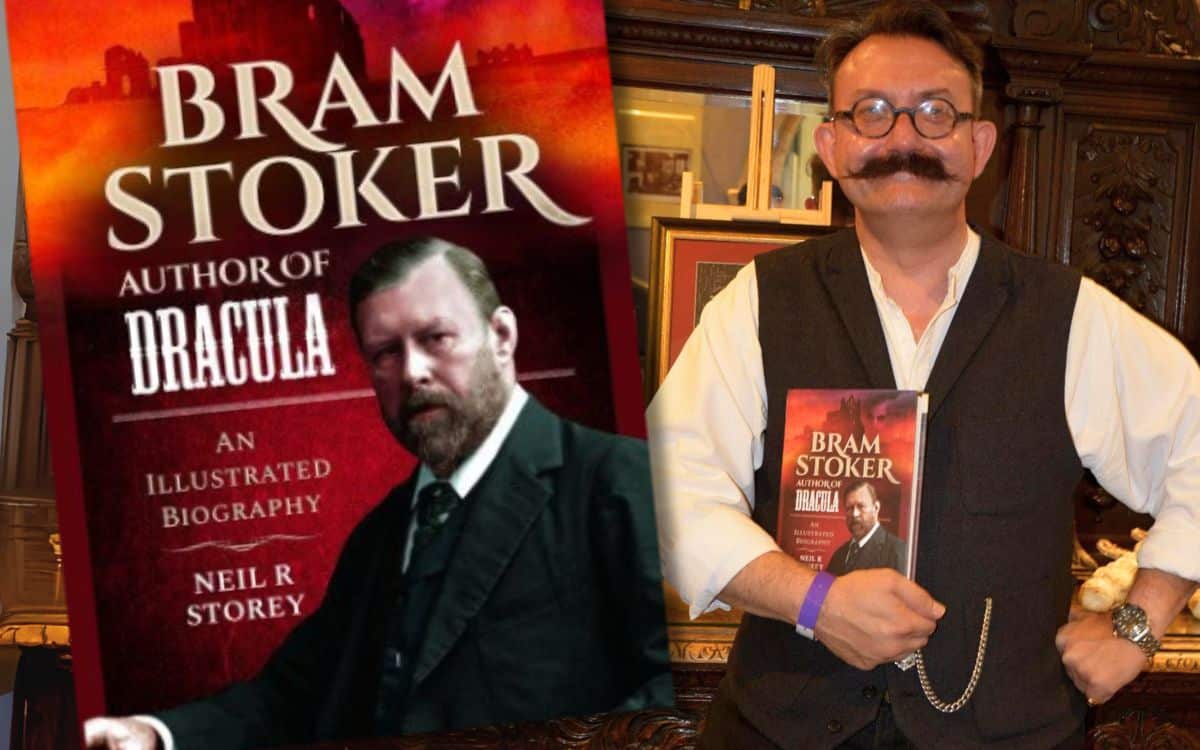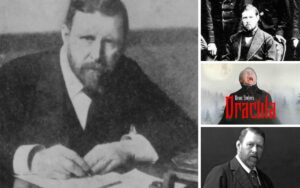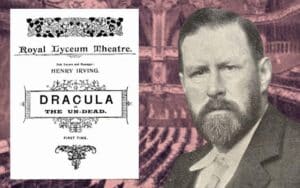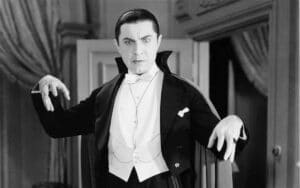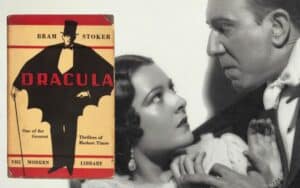Neil R Storey, the Norwich-based author of “Bram Stoker: Author of Dracula: An Illustrated Biography”, shares with DAVID SAUNDERSON his profound connection with the legendary writer and his iconic vampire creation
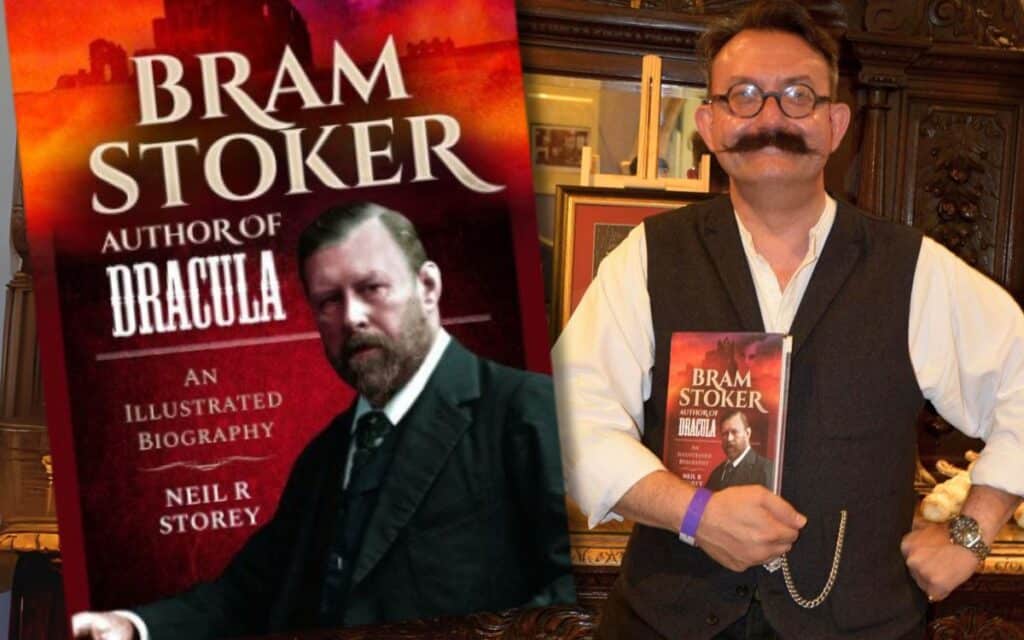
Bram Stoker Author of Dracula: An Illustrated Biography, recently published by Pen and Sword Books, is a warm and intriguing biography of the Dublin-born writer, who basically invented the vampire genre that we know today. We speak to award-winning Norwich-based historian and author Neil R Storey about his new book.
Interview with Neil R Storey
SPOOKY ISLES: Thanks for talking to us today, Neil. Your new book looks great with wonderful illustrations. It shows your real love of Bram Stoker and the king of the vampires. What was your first encounter with Bram’s work, and how did it impact your perception of gothic horror?
NEIL R STOREY: My first encounter with any of Bram’s creations occurred when I was just a boy passing the local cinema on the way to school when I saw the posters of Hammer Dracula films.
The dark images and the world of ancient castles, forests and the Victorian period where Hammer films set the Dracula stories captured my imagination and would never let go.
How did the portrayal of Count Dracula by Christopher Lee in those Hammer films influence your fascination with Bram Stoker’s work?
Christopher Lee’s portrayal of Count Dracula was both iconic and frightening to me as a young lad. The tall, well-groomed figure swathed in a cape with blood red silk lining seemed noble yet he exuded such an atmosphere of evil that alone was scary enough.
But then there was his face, the bloodshot eyes that seemed to fix on you from the posters, the snarl, those fangs and the trickle of blood from the corner of his mouth. Even now I feel something of that fear and shudder I felt so intensely all those years ago.
How do you think the portrayal of Dracula and vampires in media has evolved since your childhood? What impact do you think Bram Stoker’s work has had on this evolution?
Having to spoken to a host of friends and colleagues of 1960s, 70s and 80s vintages I have found many of us were frightened by the Dracula films, or rather we were too young to see the ‘X’ Certificate films in the cinemas, so we were frightened by the posters, magazines, books and even bubble gum cards that depicted stills from the Hammer films.
When we got to around the age 10-12, the Hammer films were starting to be broadcast on televisions in our family homes but after little more than the opening scenes (or even the opening credits), we were so scared we dived for the back of the sofa or similar safe haven.
More recent generations accustomed to modern special effects and who have access to the internet see so much more than we ever saw from an early age and seem to have become somewhat desensitised to the old Hammer films.
That said, Dracula and vampires are still very much part of the horror genre and lend themselves superbly to reimaginings that continue to enthral modern multi-media audiences.
When you read Dracula for the first time, what aspects of Bram Stoker’s writing style captivated you the most?
I first read Dracula when I was in my early teens. I was drawn in by Bram’s vivid descriptions of the landscapes and characters that are cleverly revealed through a compilation of letters, diaries and journals from various characters to form the narrative. I had never read any book quite like it before.
So from these early beginnings, you’ve now gone deeper into exploring Bram Stoker’s life and works. Can you share more about your experiences researching Bram Stoker, and any surprising discoveries you came across?
My decades of research into Bram, his books, rare articles, and collecting his original letters and memorabilia have been a constant journey of discovery and I have met some wonderful people along along the way.
I was particularly delighted to discover several recollections of Bram, Sir Henry Irving and the Lyceum Theatre by actor Sir Martin Harvey and others which are published for the first time in my new biography.
Thanks to the letters I discovered between Bram and his dear friend Hall Caine, I am also able to conclusively prove that the first official foreign language edition of Dracula was a German translation published in 1908.
You mentioned visiting places Bram Stoker knew and meeting members of his family. How have these experiences enriched your understanding and appreciation of Bram Stoker’s works?
I have thoroughly enjoyed meeting members of Bram’s family and particularly treasure my friendship with Bram’s great-grand nephew Dacre Stoker who has always taken great interest in my discoveries and has warmly encouraged my research over the years.
To have the chance to experience first hand, the places where Bram worked and visited during his research for his books has certainly helped me to make sense of Bram’s life journey and his inspirations.
Although Bram would have known Slain’s Castle as the fine baronial home of the Earl of Erroll, exploring what are now the ruins of that remarkable place was a particular pleasure. Situated atop the rugged rock cliffs of Cruden Bay with the sea crashing below it was no wonder it provided one of Bram Stoker’s particular inspirations for Castle Dracula.
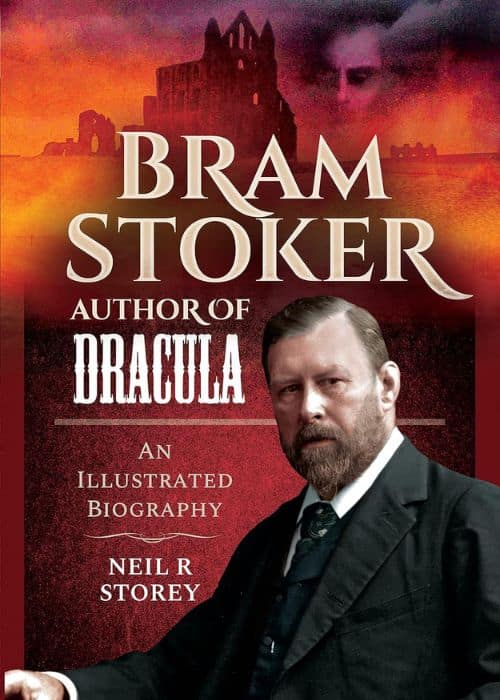
How do you perceive Bram Stoker’s influence on the modern vampire genre, and do you think his impact extends beyond the horror genre?
Bram published articles and books on a variety of fiction and non-fiction subjects.
At the time of Bram’s death, his obituaries spoke of his greatest literary legacy being his two-volume Personal Reminiscences of Henry Irving but thanks to the enduring appeal of Dracula, first published in 1897 and it has never gone out of print, his greatest impact will remain within gothic horror.
I am convinced that the genre of vampires and re-animated dead would not exist as it does today without the creations of Bram Stoker.
Can you elaborate on your experience of feeling a kinship with Bram Stoker? What aspects of his life or work do you feel resonate with your own experiences or interests?
Bram Stoker loved hearing, telling, researching, and writing stories of ghosts, the paranormal, legends, the uncanny, and the weird.
He was erudite, blessed with wit and a host of stories for every occasion but never resorted to vulgarity. He loved theatre, great conversation, good food and wine in good company.
Above all, he knew what it meant to be a true friend. These are all interests and attributes I greatly admire.
Even our personal lives have been similar to the degree we both played rugby to a competitive level in our youth, both enjoyed our time at university and both of us worked in the Civil Service before we had the opportunity to follow our desired career paths.
Above all, after all these years researching Bram I know he would have been accessible, our mutual interests are such we would have met along the way and I like to think we would have become friends. I certainly consider myself a kindred spirit of Bram Stoker.
You have painted a vivid picture of Bram Stoker’s personality and relationships. How do you think these aspects of his life influenced his writing, particularly in Dracula?
Bram loved to include allusions to friends and mutual in-jokes within all his books. The physical features, attributes and mannerisms of his friends and the interesting personalities he met over the years all provided inspiration for his characters.
In Dracula, Bram explores the bonds of friendship, courage, the dynamics of people brought together in times of adversity and danger, enduring love and love lost; all themes that Bram knew only too well in his own life.

